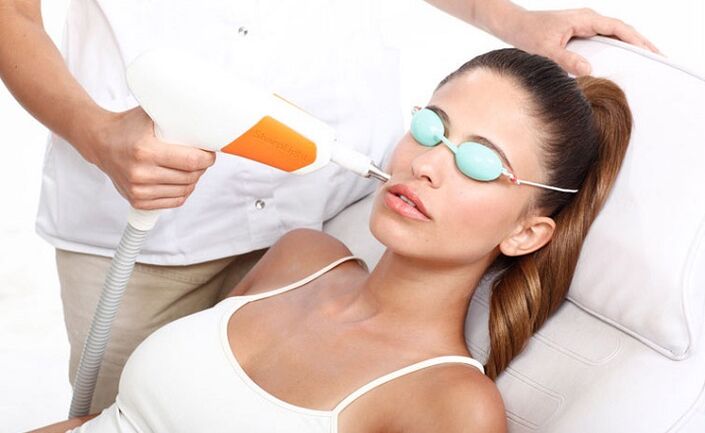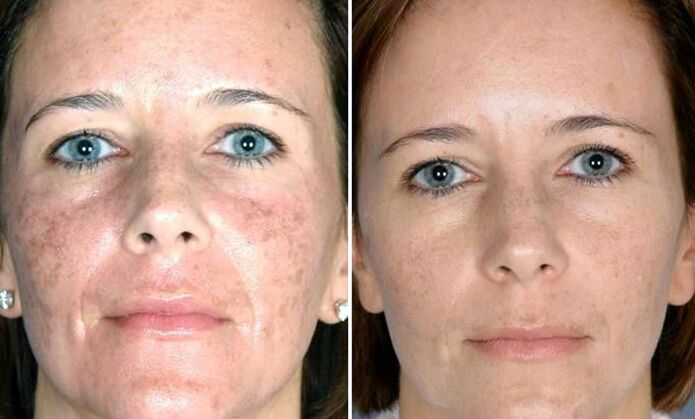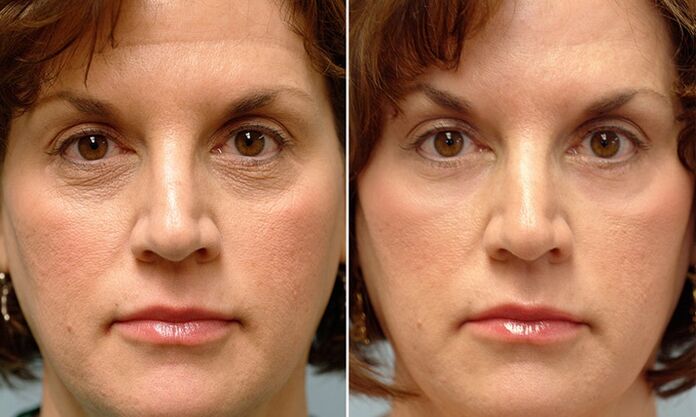From the time of Cleopatra to the present day, there is not a single representative of fair sex, who would not want to prolong the youth and beauty of her skin. Modern medical science does not stop to amaze with innovations in the field of cosmetology, various anti-Aging offers surgeries and procedures.
Particularly popular are techniques that allow you to get rid of external signs of aging without resorting to scalpel or Botox injections. Partially laser rejuvenation is currently practically the fastest and most effective way to combat skin aging. Is the safest method.

What is a fractional laser and how does it "rejuvenate"
When the laser hits the skin, there is a burn that spreads deep. The active healing (regeneration) process begins, which provides the desired cosmetic effect. This process is also known as laser skin revitalization in cosmetology. is.
If a single laser is split into several micro-beams, the so-called fractional laser beam is obtained. Such a beam will no longer serve as an intermittent microgrid rather than the entire space on the skin. After fractional laser thermolysisBurning is located among the icy skin in the form of a large number of microdotes. This significantly reduces the trauma (as well as soreness) of the process and allows the skin to heal faster.
After exposure to the laser, healthy skin cells begin to actively divide with the formation of collagen and elastin, providing elasticity and a youthful appearance of the skin.
Different types of fractional photothermolysis
Fifth division
Under the action of laser irradiation, water evaporates from the tissue and becomes an "open" microscopic wound around which the damaged (burned) cells are located.
During treatment, there is a clear lifting effect, but there is a risk of infection in the deeper layers of the skin.
Non-inflection
Radiation is used, which retains the epidermis, so it does not evaporate from the tissues and constitute an "open" wound. Burns form and heals under the epidermis, so there is no risk of infection, but thisThe rejuvenation effect of the process is less pronounced.
The cosmetologist individually selects the method of partial rejuvenation based on the condition and type of skin.
Effects and benefits of fractional laser thermolysis
The main difference between technology and all other processes is the optimal balance between safety and effectiveness.
Main pluses:
- The ability to affect any part of the body (including dicolate, neck, eyelids);
- A wide range of signals;
- Physiology (the area of damage is only 20% of the entire area treated with a laser);
- Short therapy period (2–7 days);
- Anesthesia method - application;
- The possibility of using it on individuals with dark skin (as it does not cause hyperpigmentation);
- Duration of result (from one year to several years).
The downside is insufficient knowledge of all aspects of the effect of a fractional laser, as the technique has recently appeared.
Indications for partial rejuvenation:
- Wrinkles (of any depth and location);
- Decreased elastic properties of the skin;
- Enlarged perforation;
- Pigmentation;
- Acne;
- Spider veins;
- Scars (postoperative, residual after acne);
- Stretch marks including the skin of the mammary glands.
Characteristics of conducting partial laser thermolysis
A few days before the photothermolysis procedure, cosmetologists may prescribe antibacterial or antiviral drugs in prophylactic doses (if indicated).
On the day of fractional rejuvenation, it is necessary to completely exclude physical activity, smoking and alcohol consumption.
Before the procedure, the skin is thoroughly cleaned and treated with a special anesthetic cream. In some cases, anesthesia is not required.
The effect of the laser is felt as a "tingling" or "tingling". The duration of the procedure (from several minutes to an hour) and their number are chosen individually. After the laser treatment, a soothing nutritional creamApplied on the skin.
Follow-up skin care:
- Moisturize the skin with a special cream 2-3 times a day (within 2 weeks);
- Protect the skin from UV radiation for 2 months (do not attack the solarium, use sunscreen with a protection factor of at least 30);
- Do not use peels and scrubs (within 2 weeks);
- Do not use cosmetics containing salicylic acid and retinol (within 2 weeks);
- Do not wear compression underwear for several days (if partial photothermolysis was performed on the body);
- Limit (exclude) smoking and alcohol during the entire course of treatment (reduce regenerative functions of the skin).

On average, the rehabilitation period lasts 3 days after non-ablative fractional laser thermolysis and 7 days after ablative thermolysis.
Skin changes after the procedure
For 1-3 days after acute laser exposure, skin redness, discomfort, and mild swelling may persist. If this condition is tolerated poorly thematically, pain relievers and skin cooling are allowed.

After a few days, a bronze skin tone (tanning effect) may appear, which lasts up to 2 weeks and disappears on its own. Within 5-7 days after partial rejuvenation, dryness and peeling of the skinIt is mentioned.
Undesirable results and contraindications for photothermolysis
Following inappropriate skin care after the procedure, noncompliance with recommendations, or technical errors during laser treatment, the following complications are possible:
- Redness of skin for more than 3 days;
- Edema at the site of exposure lasting more than 2 days;
- The spread of herpes infection (if it was previously in the treatment area);
- Infection (presence of streptoderma);
- Erosion, burning in the affected area;
- Haemorrhage haemorrhage;
- Hyperpigmentation.
To avoid undesirable results, fractional laser rejuvenation is performed after examination and exclusion of possible contraindications.
Absolute differences:
- Pregnancy and breastfeeding;
- Tendency to form keloid scars;
- Acute infectious process (including herpes);
- Oncological pathology;
- Radiation, status after chemotherapy;
- Epilepsy;
- Important disorders of the immune system;
- Taking retinoid-containing drugs;
- Psoriasis (atopic dermatitis) during a thrust.
Relative:
- Renal pathology;
- diabetes;
- Swelling at the risk site;
- The reluctance of the patient to follow the recommendations of the cosmetologist;
- mental illness;
- Allergic to anesthetic;
- Autoimmune diseases;
- Fresh tan (visit to the solarium within the last month);
- Recent rejuvenation process (affecting the deeper layers of the skin - within the last three months, superficial - within 10 days).
Partial laser rejuvenation from the "before" and "after" series and reviews of patients' photographs generally hurt the effectiveness of this method of youth preservation and reduced trauma.

Remember!This procedure can only be performed by specialists (surgeons or dermatovenerologists) who have been trained and are allowed to work with laser equipment. A doctor's qualification is the key to your beauty!














































































